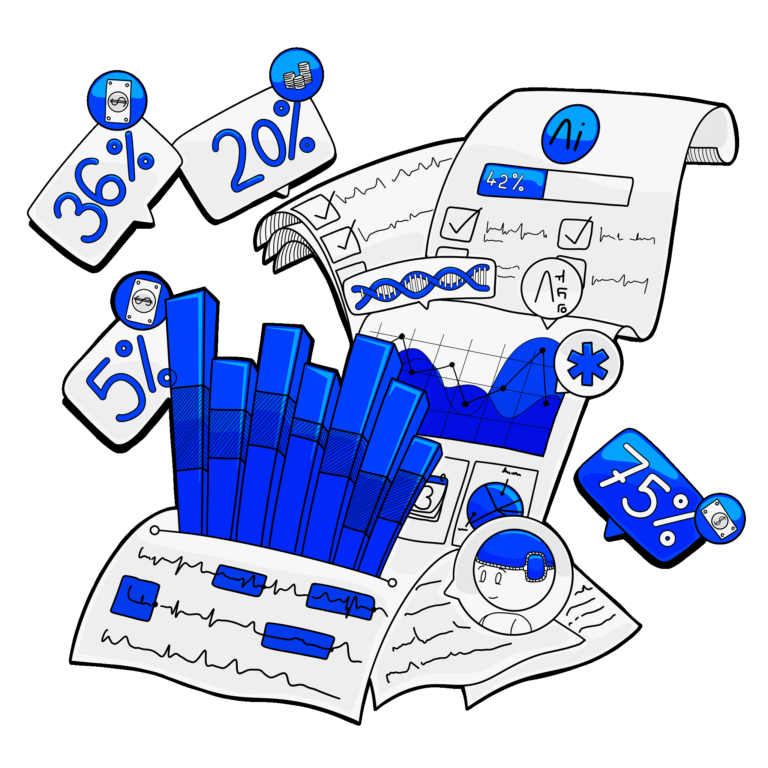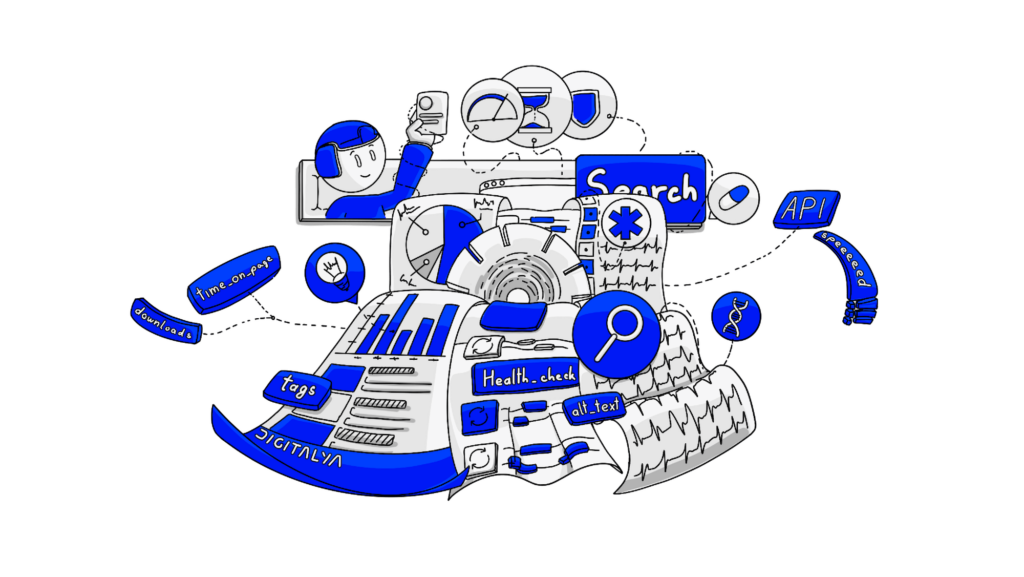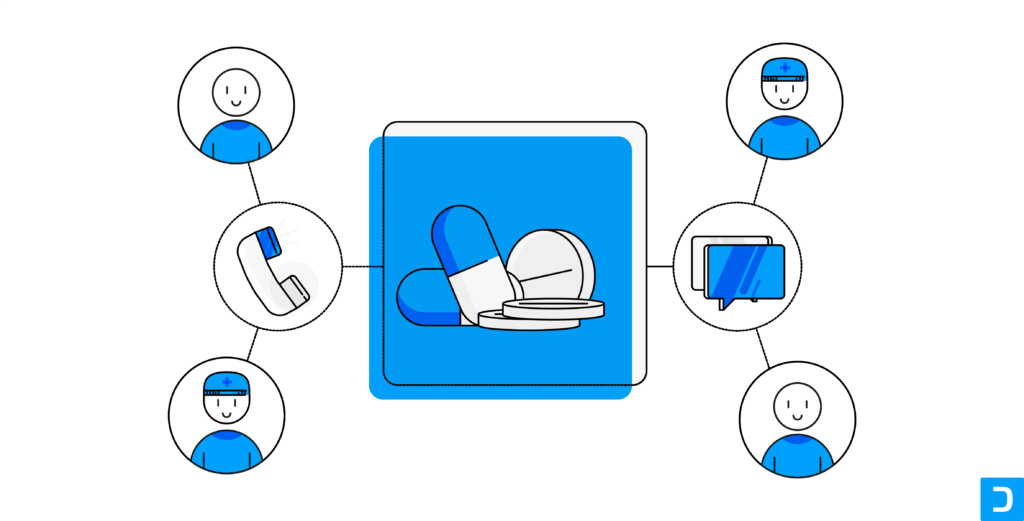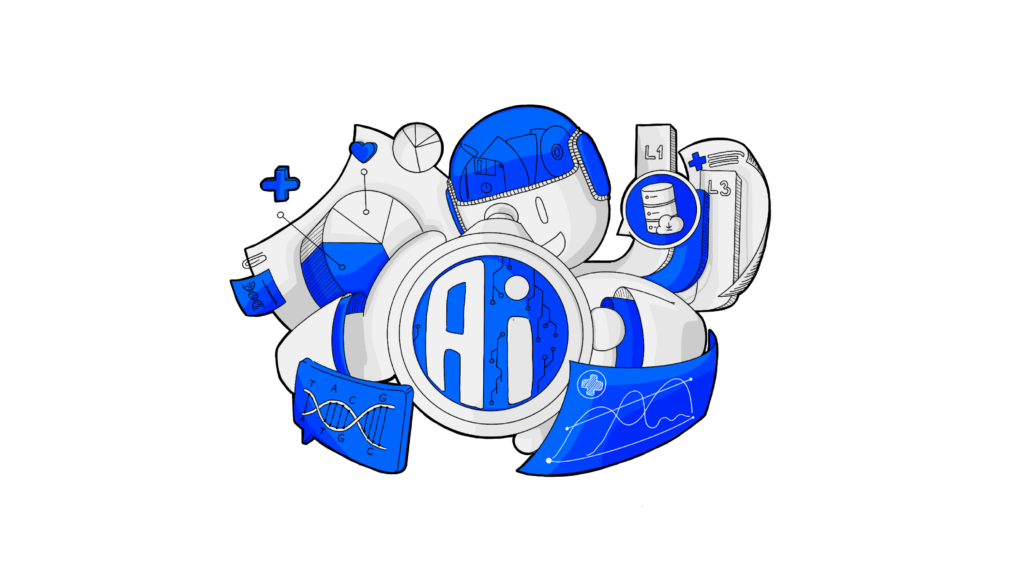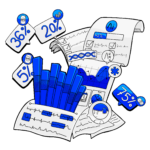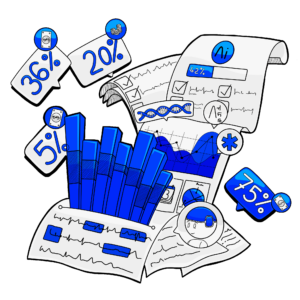Medicine and healthcare are some of the fields where technological progress has an immediate and massive impact. Think only of how much we now understand about the body’s cells and organs, about how the brain works, thanks to high-tech devices and software. And thanks to AI, machine learning, and IoT, there is still so much to discover. Another good use of IoT in healthcare is remote patient monitoring, with the help of remote health monitoring software and smart devices.
1. What is health monitoring software?
Health monitoring refers to those activities and devices grouped around digital technologies with the purpose of keeping track of a person’s health indicators, usually vital physiological parameters.
Remote health monitoring software refers to the necessary software used to collect, distribute and interpret health data from various connected devices or to permit care management, remotely or on-premise.
Some examples are blood glucose, blood pressure monitoring, or heart rate, remotely measured with the help of monitoring tools and health management software.
Since the COVID pandemic, the need to provide remote care for patients has become more evident. Both healthcare professionals and patients saw the benefits of telemedicine and the real advantages of remote monitoring software and devices.
No wonder the patient monitoring system market evolves so fast. In 2019, a report by mHealth Intelligence showed that 88% of providers put their money into remote monitoring technology. In 2020, in the full pandemic period, 23.4 million patients in the U.S. used remote patient monitoring rpm tools, according to Insider Intelligence. The same estimate predicted an increase of 28.2% by 2024, up to 30 million patients or 11.2% of the U.S. population. The projection goes even further, estimating that, by 2025, 70.6 million U.S. patients will benefit from remote therapeutic monitoring.
In other words, think of at least 70 million potential users for health tracking software in the U.S. alone, in 2 years’ time. And these are the patients alone. However, you also need to count the healthcare professionals at the other end of the monitoring system, who use the provided health data and act upon it.
2. What are the types of health monitoring?
Let’s dig into some examples of digital health to get more clarity and, perhaps, some inspiration for future health check software development.
Vital sign monitoring
Among the first uses of remotely monitoring patients is the tracking of patients’ vitals, such as heart rate and blood pressure, or body temperature. Changes in these parameters are the first signs that alert doctors, whose timely intervention can make the difference between life and death. This type of patient monitoring software allows the medical staff to intervene on time in case of heart failure and save the patient’s life.
Continuous Glucose Monitor
For people suffering from diabetes, such blood glucose monitors are not only helpful in moments of crisis but also to maintain a good level of well-being daily. The connected device regularly checks glucose levels, alerts when parameters are out of the accepted range, and correlates the blood sugar levels with the effect of diet, medication, illness, stress, or exercise. This data is beneficial for treatment adjustments and to help the patient reach his health goals.
Fetal Monitoring Systems
The impact that research and technology development has on neonatal medicine is unquestionable. Giving birth, as a natural phenomenon as it is, also benefits from the safety provided by patient monitoring system technology. Digital devices that monitor both the mother’s and the baby’s vitals make sure all goes well during labor and birth. Measuring the fetus’s heart rate is also done during pregnancy. It can indicate early on possible risks, which can be addressed in due time. Such systems need sensitive sensors and a smart device equipped with remote health monitoring software to collect accurate data and transmit it in real time.
Brain Monitoring Systems
Neurological affections are some of the most delicate, as they render the patient in extremely vulnerable situations. Oftentimes, the effects of various brain damage are unpredictable or difficult to identify from regular examination. This puts the patients at risk. A smart system that does remote brain performance monitoring can indicate early signs of a stroke or the activation of certain brain parts. There are details some patients aren’t even aware of or unable to communicate.
Medication Monitoring
Another type of remote patient monitoring is a system designed to keep track of medication and its effects on the patients. A virtual care app can be of real help to people who find it difficult to keep track of their medication. On the other end, the attending physician can get regular, automated reports on the effects of the drug. This way he can adjust the dosage or the active substance.
Pediatric monitoring
Children, infants especially, require much energy and focus to keep an eye on. They are constantly moving and don’t have sufficient vocabulary to express what they want and feel. It is hard to identify the actual problem when they fall ill as we would for an adult person. Virtual care management built for pediatric use sends valuable data on the health parameters that cannot be assessed by a regular check. This ensures that health risks and affections are controlled, with the possibility of immediate intervention.
3. Examples of health monitoring software
If you are considering healthcare app development, here are some examples of monitoring software for healthcare purposes. They may give you a clearer idea of what you can develop yourself.
- Dexcom is a glucose monitoring app with a wearable sensor that transmits glucose level parameters to a smart device. The software collects and translates the blood sugar data to the patient, some of which can be shared with ten other people.
- Medtronic provides remote monitoring software only, which can be integrated with various wearables and smart devices to monitor patients’ vital signs. It also measures blood glucose and blood pressure or weight scale.
- Cloud DX is an example of remote patient monitoring (RPM) software designed for large practices that also allows telemedicine. It is a cloud-based solution that allows remote vitals monitoring, centralized health reports and dashboards, and session tracking for clinics and hospitals.
- MedM is a remote care SaaS platform that also addresses patients and their families. The software collects patients data from over 600 monitoring tools such as wearables, sensors, and IoT devices. The software covers 18 measurement types, and the MedM hub middleware can get data from 4-8 medical devices.
- Philips has also developed a remote patient monitoring platform for both clinical and patient use. It is designed mostly for tracking the care plan by the physician, based on health data introduced by the patient or carer.
- CoachCare is another software for clinics to provide virtual care management, that can be customized for various workflows and protocols. The software also provides a patient portal and RPM devices to collect patient data.
You can find further inspiration in our article on top healthcare apps.
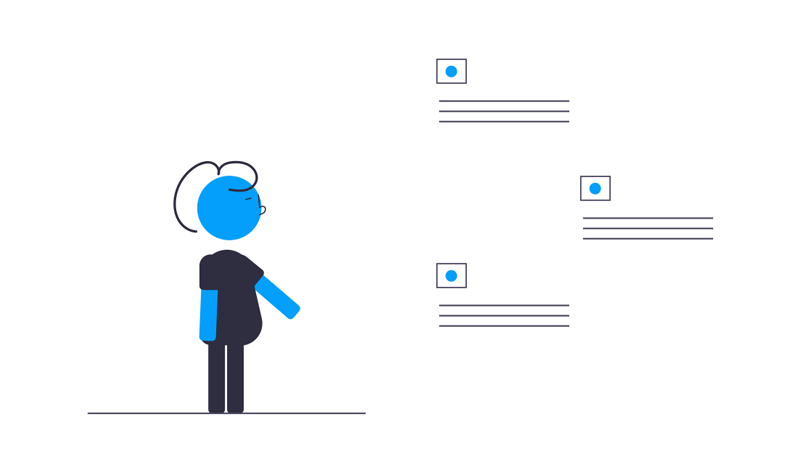
4. Pros and cons of health monitoring software
When you analyze healthcare app development, it is easy to see the benefits for the end users – patients and healthcare professionals. Making patient monitoring possible remotely is a great advantage for the practice of medicine and the well-being of people worldwide, especially where access to healthcare institutions is rather difficult. However, as you probably anticipate, medical app development has concerns and challenges that should not be ignored but included in the development strategy.
Pros of patient monitoring software
Quality of life and care for patients
The first to benefit from remote health monitoring software combined with a patient monitoring system device are the patients. Not only can their lives be saved by the real-time transmission of vital signs and alerts, but also less drastic yet challenging issues can find a solution. Think only of patients with a chronic condition who need constant check-ups and treatment adjustments. They can benefit from real-time data transmission and telemedicine. This way, they don’t need to pay often visits to their physicians, just annual wellness visits.
Better treatments
One of the benefits of monitoring tools for patient health and the medical act is that, based on real-time data, medical professionals can adjust treatment plans according to the patient’s responses. This is particularly important for chronic care management, as it impacts a person’s life span. Doctors can make more informed decisions that would benefit patients beyond any measurement.
Accessibility to healthcare
Getting an appointment with a doctor is usually difficult and full of cost-related and bureaucratic barriers. With remote health monitoring software, it becomes easier for more people to get a check-up. Patient monitoring system applications such as telemedicine or health parameter monitoring can bring patients and physicians closer in a faster, less costly manner. Doctors can already access basic health data and knowledge about the patient’s health state at their first encounter. This saves precious time. Not to mention the access to healthcare in remote areas, where such institutions don’t exist, and it would take a long, tedious journey to get to see a doctor in person.
Cost-efficiency for medical facilities
Clinics, hospitals, and health care facilities, in general, can reduce costs considerably by employing a remote health monitoring system through IoT, especially. The simple fact of collecting data in real-time can save time and money for medical professionals. They won’t need to run costly tests to get the same information a remote patient monitoring software can provide. Office visits can be shortened, which means fewer in-office hours. Readmission rates can be trimmed.
Cons of Remote Patient Monitoring
Connectivity and patient accessibility
One of the main patient monitoring system disadvantages is that it requires a good internet connection. Not all patients have this. The paradox is that those in most need of remote care, due to physical isolation (living in remote areas), are kept away from this solution because of their isolation and lack an internet connection.
Data reliability and compliance
This is more a challenge than a disadvantage. However, when considering a monitoring system project for patients and healthcare, data privacy, security, and compliance are priorities. Health data are sensitive and fall under multiple laws and regulations, regardless of the country. You need to ensure that the servers are well protected, the data backed up, and the way you provide and handle that information complies with the country’s regulations.
Integration and adoption
Remote health monitoring software implies the adoption of new software and a learning curve for the users and the challenge of integrating the data with the existing servers and applications, mainly the electronic health record (EHR) for patients.
Data reliability
If you don’t have hands-on control, you can expect misuse of data entry. This becomes an annoyance for medical professionals who need to make decisions for their patients based on the data collected by the system monitoring tool. Suppose the patient hasn’t properly used the app or wearable (the blood pressure cuff, for example). In that case, the data collected doesn’t accurately reflect the health status and can lead to improper medical recommendations.

5. What to have in mind for developing health monitoring software
Just like for any custom software development, there are some main principles to follow when you develop software for monitoring patients, plus some particularities.
Market fit
What is the problem that your remote monitoring software solves for the health system? Is it painful enough for people to adopt your solution? Are there enough people who need it, so you can further scale?
Target audience
While the end user and beneficiary are the remotely monitored patient himself, to whom will you sell your monitoring software? Establish who is the category that will adopt and install your software. Depending on the use case, the target’s particularities, and needs, you can start to think about its purpose, main functionalities, and architecture. You can build monitoring software for telemedicine, remote diagnosis purposes, patient monitoring only, or, for more general use, for hospital management.
Functionalities
The things to address when health monitoring systems are involved are numerous. There are so many types of monitoring solutions, from chronic care to patient monitoring system in ICU. Depending on the target audience and the problem it addresses, you need to prioritize the functionalities. Real-time patient data collection may come first and push notifications may come first, while scheduling and reminders can be secondary functions.
UI/ UX design
Healthcare is maybe one of the areas where user experience and good user interface design are very important. Not that patients and the medical staff care so much about how a platform or app looks (they have more pressing issues on their minds), but because they need it to be very intuitive and easy to use. Patients are people with a certain degree of health challenges, which may diminish their perception and learning abilities. They need an app that does not require extra effort to use and deliver its benefits. Doctors and the medical staff are very busy people, with important decisions to make on regular basis, with the burden of high responsibility on their shoulders. They don’t need an extra challenge when it comes to new digital tools. Quite the contrary – they need a clear mind to focus on diagnosis and treatments.
Data security and compliance
As mentioned in the Pros and Cons section, consider all “what may go wrong” scenarios concerning patient data and health records. Then provide the solutions so that those scenarios never happen. Otherwise, your target audience won’t trust you with handling such sensitive information. Also, check the compliance requirements for the remote patient monitoring software market you want to address and make the necessary steps to adopt it.
Integration
The data collected by remote monitoring solutions aren’t of much use by themselves, but only if they can be accessed and correlated in a wider context, by medical staff. Think about integration possibilities with EHR and other healthcare platforms and institutions, so that patients can benefit entirely from this digital solution to their health challenges.
In the end, health monitors and remote patient monitoring are becoming increasingly present in our daily lives and part of the future of medicine. Developing health monitoring software is an opportunity worth taking into account.

